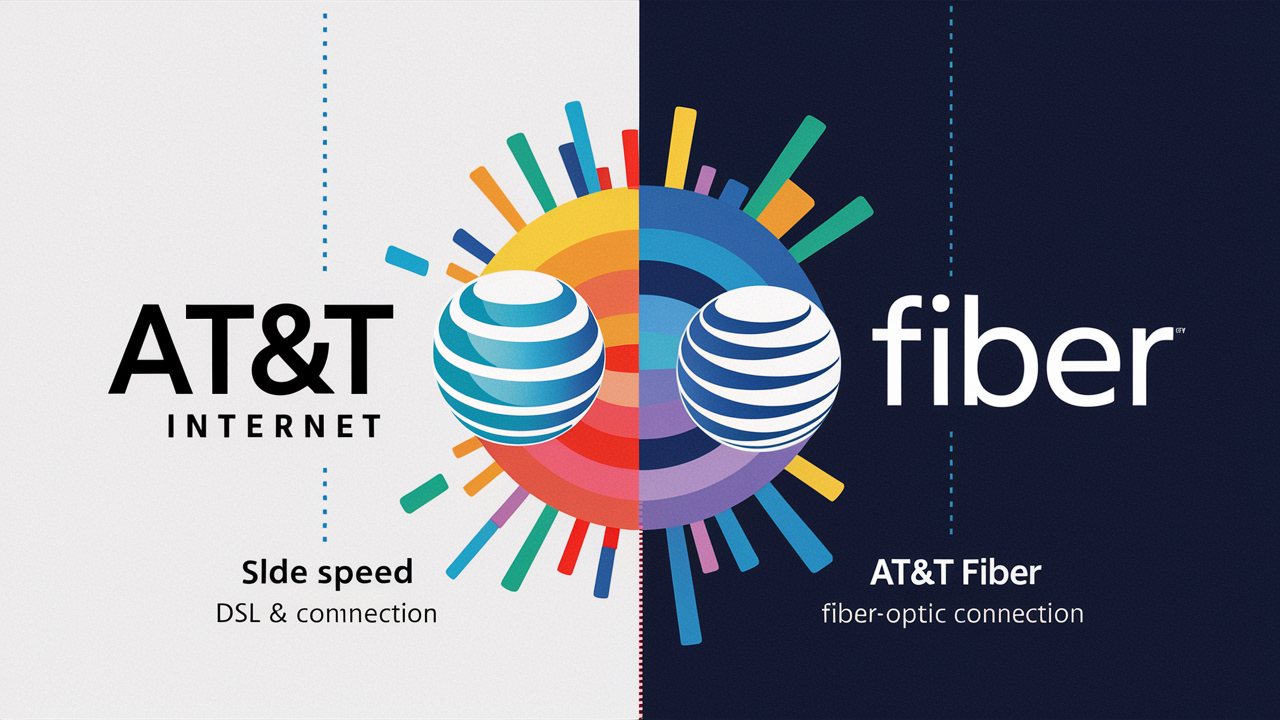What is the difference between AT&T internet and AT&T fiber?

What is the difference between AT&T internet and AT&T fiber
Two main home internet offerings from AT&T are AT&T Internet and AT&T Fiber. Though each of these services comes from AT&T, their speed, technology, access, and price vary somewhat. This helps you to decide, among all the variations, which service would be most appropriate for your house.
Speed Differences
The connection speed distinguishes AT&T Internet from AT&T Fiber most significantly. With download and upload rates ranging in many locations up to 1Gigabit per second, AT&T Fiber offers substantially faster internet speed. That is almost exactly 100 times quicker than the fastest speeds available via AT&T Internet.
Using discontinued DSL technology, AT&T Internet offers asymmetric speed. While the maximum upload speed is only 10 or 20 Mbps, the maximum download speed is 100 Mbps. This is particularly crucial if numerous devices or persons are connected to the same connection as those constrained upload speeds could lead problems.
Because of the higher Gigabit speed, AT&T Fiber can easily support multiple devices, streaming the highest quality videos, video calls, gaming, and other bandwidth-intensive tasks. The symmetrical speeds also give equal and fast acceleration when it comes to the downloading and uploading of data.
So if you are OK with raw speed then it is better to choose AT&T Fiber rather than going for AT&T Internet. However, there are still some constraints regarding its availability when compared to the more popular AT&T Internet.
Technology Differences
The speed discrepancy between AT&T's services stems from differences in the underlying technology.
- AT&T Internet leverages DSL technology, in which data is transmitted over regular copper telephone lines. This rather old technology cannot offer speeds higher than around 100 Mbps.
- AT&T Fiber utilizes optical cables which are made of flexible glass to transmit information. As to the last external factor, fiber-optic Internet can provide practically infinite bandwidth and speed that are not constrained by basic physical constraints. This fiber optic connectivity provides AT&T Fiber with a technological edge over AT&T Internet.
Availability Differences
The next major difference is availability. Although it is now available in 14 states, one has to remember that AT&T Fiber is only available in select markets, with an emphasis on big cities and their outskirts. Since AT&T Internet relies on phone lines, it is more accessible than fiber connections, and even some rural regions are covered.
If AT&T Fiber isn’t available at your address but you’re looking for faster DSL, then AT&T Internet is the next best thing even if speeds can’t compete with AT&T Fiber’s 1 Gigabit peak. In either case, this is fiber, which is usually preferred by city residents who have the option of using both services.
Cost Differences
Besides the variation in speed and accessibility, there is also a variation in the cost. AT&T Fiber has an expensive subscription fee as compared to the other services provided by AT&T Internet which uses DSL. However, AT&T Fiber costs are reasonable when compared to other providers’ gigabit fiber offers.
It is also important to note that both AT&T Fiber and AT&T Internet are based on your location and the speed packages you want. But in general:
- Internet service offered by AT&T begins at $40-$55 for a download speed of up to 100 Mbps. You might be able to reduce your monthly fees by bundling with other AT&T services.
- Residents who sign up for internet service with speeds of 300 to 1000 Mbps pay between $60 and $110 monthly depending on the plan. Optional services can be bundled to make the price lower as can be seen with the AT&T Internet services.
- Another disadvantage of AT&T Fiber is that it costs approximately $10 more per month if you do not agree with AT&T's internet preferences and personalized ads program. Saying no to the program raises your monthly cost but it also safeguards the privacy of browsing.
The further distinction lies in factors such as equipment fee, data limit, and the contract term of the two internet services. Just as with any other subscription-based service, make sure you research and familiarize yourself with the different tariffs before you commit.
So which is better for you?
Here is a breakdown of the major contrasts in the technologies, accessibility, speed, and costs between AT&T Fiber and AT&T Internet. Well, which one of these options is better for your household?
If AT&T Fiber is offered where you live, it is the better choice. The gigabit speeds, fiber-optic connection, and affordable price put it in the category of the best ISP. It effectively handles all that is required for the contemporary world such as video streaming and smart home technology for the modern family.
AT&T Internet is the next tier down from AT&T Fiber, offering fairly fast internet service in regions where the company doesn’t offer fiber internet using old DSL technology. Even though the speeds cannot compete with AT&T Fiber, the service offering is better than the old dial-up connection. AT&T Internet is suitable for simple online tasks like browsing, emails, and minimal streaming at an accessible price range.
Suppose you are looking for consistently fast internet connection speeds – especially upload speeds for high bandwidth tasks such as streaming 4K videos or online games. In that case, AT&T Fiber is far better than AT&T Internet. Consider if the faster fiber option is affordable and if the higher but fairly reasonable prices are worth it today in your neighborhood. When comparing the speed, availability, technology, and cost of AT&T Fiber and AT&T Internet, you can decide which service is suitable for your home.
Upgrade to faster, more reliable AT&T Fiber Internet today! Call us at +1 844-905-5002 and get connected with speeds that keep you ahead.





